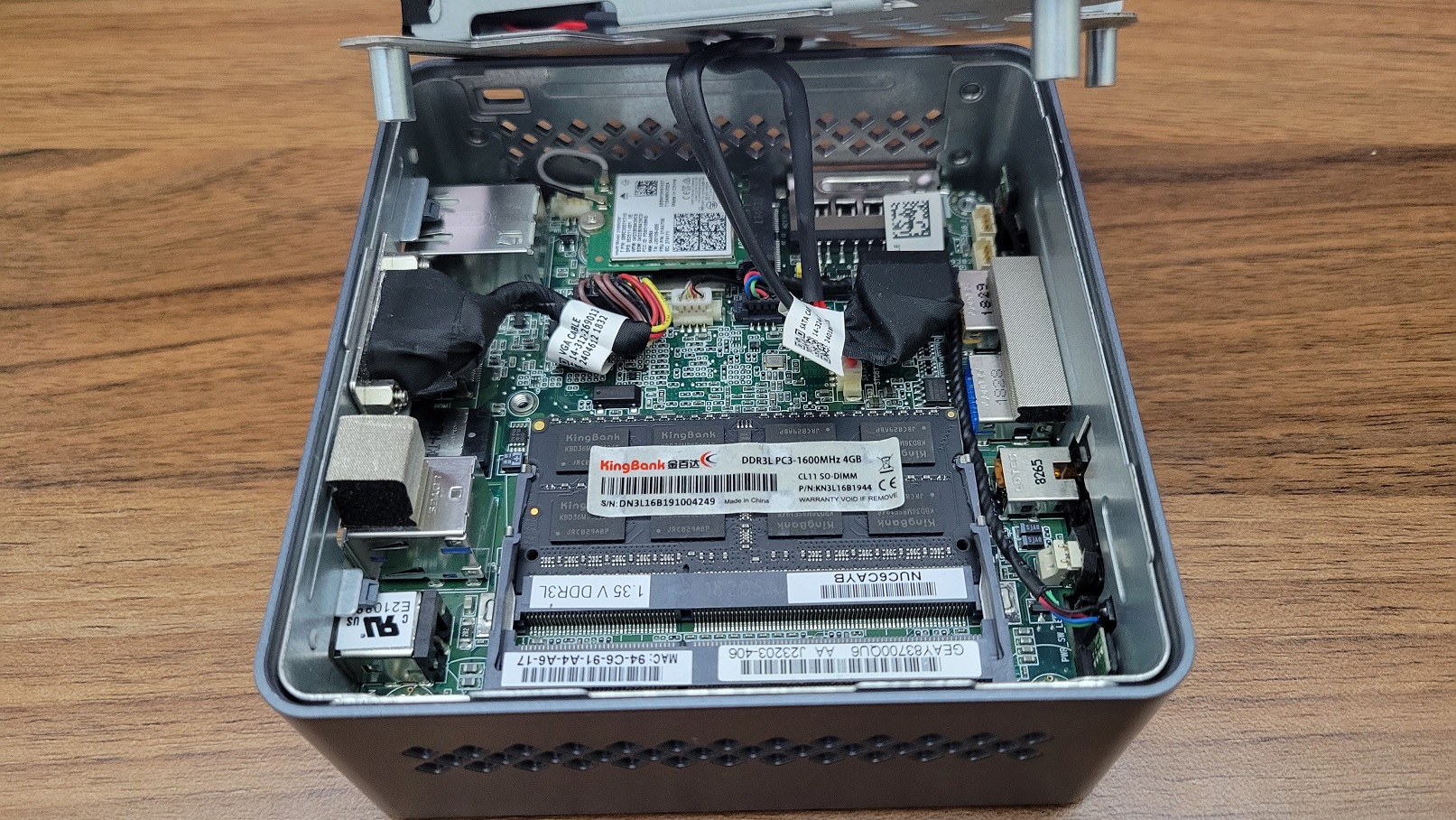踩了个大坑:总算搞明白内存密度(RAM Density)了
hive-105017·@oflyhigh·
0.000 HBD踩了个大坑:总算搞明白内存密度(RAM Density)了
朋友送我一台略上年纪的NUC小电脑,型号为NUC6CAYH(6代赛扬CPU),同时朋友送的NUC中还带了一条4G内存,只要我加上硬盘就可以使用,我打算装个Ubuntu用于学习和测试。  (图源 :[pixabay](https://pixabay.com/)) 不过每次当我开机时,这个电脑都会提示如下消息: >Unsupported 1Gb / 2Gb density SODIMM(s) detected on SODIMM Slot 2. System instability or data loss possible. Replace with SODIMMs with 4Gb or higher density. Continue (Y/N). 翻译过来是这个样子: >在 SODIMM 插槽 2 上检测到不支持的 1Gb/2Gb 密度 SODIMM。系统不稳定或可能丢失数据。 更换为 4Gb 或更高密度的 SODIMM。 继续(是/否)。 我在敲`Y`,电脑就可以继续启动,进BIOS也显示正确地识别到相应的内存与容量,装上Windows 10或者Ubuntu 22.04 LTS貌似也没啥问题。 偶尔用一下这个机器,似乎上述问题构不成困扰,但是如果把这个机器当作学习测试机,我是不打算插上鼠标、键盘并连接显示器的,而是丢在一边,通过网络访问就好。 但是问题来了,需要启动或者重启的时候,没有键盘,就没法敲那个`Y`,那么就没法启动系统,自然也无法联网,当然也就别提通过网络访问啦。 最初,我并不以为这是个大问题,以为在BIOS中设置一下,或者更新一下BIOS,一定会解决这个问题。不过,当我稍微探索一下后,我发现事情并没有这样简单! Intel官方网站明确指出——这个错误信息无法禁用: >This error message can't be disabled. 终极解决方案是——换内存: >Install SODIMMs with a density of either 4 Gbit or 8 Gbit. 为了让大家搞明白应该换成啥样的内存,Intel还特意弄个了页面,来告诉大家应该选择/购买啥样的内存,比如以下是兼容的内存: > 又比如,这些是不兼容的内存: > 看完这些后,我就彻底懵了,好吧,我知道按着对比图,以及容量信息,我应该可以选择到正确的内存,但是这个内存密度(RAM Density)到底是什么鬼,应该怎么计算呢?我尝试从这个几个图中分析出来,可是越绕越晕😵 于是我就各种查资料,查网页,查维基百科等,想搞明白到底什么是内存密度(RAM Density),它是如何计算的? 比如在[有个网页上](https://www.nsslaptopservicecenter.com/which-ram-density-is-large)找到这样一段信息: >What Is Ram Density? >RAM Density refers to the memory density of the individual chips on the module. RAM have have 8 to 16 chips with memories. If the RAM supports ECC. 可是,这个答案就好比说,内存密度就是指单个内存芯片的密度。我还是有些晕,没想明白上边Intel给出的示例中,内存密度是咋算出来的? 又在[维基百科一个页面](https://en.wikipedia.org/wiki/DDR_SDRAM)上找到这样一段信息: >DRAM density Size of the chip is measured in megabits. Most motherboards recognize only 1 GB modules if they contain 64M×8 chips (low density). If 128M×4 (high density) 1 GB modules are used, they most likely will not work. The JEDEC standard allows 128M×4 only for registered modules designed specifically for servers, but some generic manufacturers do not comply. 好吧,我更晕了。不过这愈发激起了我的挑战欲,一定要把这个搞得清清楚楚,明明白白。 最后,直到我在[另外一个维基百科页面](https://en.wikipedia.org/wiki/Memory_geometry)上,看到这样一段话: >The lowest form of organization covered by memory geometry, sometimes called "memory device". These are the component ICs that make up each module, or module of RAM. ***The most important measurement of a chip is its density, measured in bits***. 注意,我用斜体粗体标记的部分:***The most important measurement of a chip is its density, measured in bits*** 尤其是后边的半句话:***measured in bits***,我所有的疑惑和不解瞬间消散,原来这个***内存密度就是指单个内存芯片的容易,按位计算!***,注意,是***按位计算,而不是按字节!*** 在回头看Intel网页上的提示信息,比如***`Density: 4 Gbit`***,人家清清楚楚明明白白写着`Gbit`而不是`GB`,因为我阅读不仔细,想当然的当成GB,也就是说按字节计算的芯片容量,所以当然怎么算都不对了。 那么,现在内存密度(RAM Density)如何计算就非常清楚了,***内存的容量除以内存芯片个数,得出单个芯片的容量(字节数),再换算成bits就可以了(x8)***。 所以,无需Intel网站上繁琐的对比图,看到内存我就可以自己计算内存密度并知道我手头的内存是否兼容这个NUC6CAYH了。  好吧,看了一下,我手头的DDR3L,好像都是2Gbit内存密度的,属于不兼容行列的,哭死啊。唯一一块DDR3标压的内存(8GB),内存密度(4Gbit)倒是够了,但是据说NUC6CAYH只支持低电压版内存(1.35v),不支持标压版(1.5v),晕了(((φ(◎ロ◎;)φ)))。 还有就是DDR3L内存属于上一代(或者说上两代)的老旧产品,现在新的都奇贵无比,买的话,总感觉有些亏呢?😳 # 相关链接 * [System Memory for Intel® NUC Kits NUC6CAYH and NUC6CAYS](https://www.intel.com/content/www/us/en/support/articles/000023025/intel-nuc/intel-nuc-mini-pcs.html) * [Unsupported 1GB or 2GB Density Error for Intel® NUC Kits NUC6CAYS and NUC6CAYH](https://www.intel.com/content/www/us/en/support/articles/000023485/intel-nuc/intel-nuc-kits.html) * https://en.wikipedia.org/wiki/DDR_SDRAM * https://en.wikipedia.org/wiki/Memory_geometry * https://www.nsslaptopservicecenter.com/which-ram-density-is-large * https://uk.crucial.com/support/articles-faq-memory/guide-to-memory-chip-density
👍 netaterra, joeyarnoldvn, deanliu, cnfund, warmstill, drexlord, btshuang, mygod, teamvn, lnakuma, dine77, lestrange, joele, janaveda, nextgen622, soufianechakrouf, julian2013, catwomanteresa, mermaidvampire, kimzwarch, archisteem, travelgirl, davidke20, japanguide, namchau, itchyfeetdonica, vamos-amigo, steemegg, a-secondchance, mia-cc, voxmortis, ioioioioi, digital.mine, pet.society, vickyli, jywahaha, alexis555, rasalom, aafeng, joythewanderer, magicmonk, nanosesame, minloulou, etherpunk, hmayak, moleah, dailyke20, roberto58, jimhawkins, bert0, memeteca, tresor, fatman, pishio, bnk, lovelemon, mangou007, chenlocus, dses, gtpjfoodbank, dbfoodbank, weddinggift, leomolina, tvb, penguinpablo, fusion.lover, omnivori, cryptonized, funnyman, alphacore, hungrybear, jacuzzi, bboyady, jongcl, ivet, hive.friends, seikatsumkt, hivewatchers, logic, steemcleaners, eturnerx, votehero, msp-makeaminnow, tomiscurious, we-are-lucky, fourfourfun, adm, bilpcoinbot, kgsupport, sasaadrian, lovelingling, bxt, evahe, xiaoyaodidi, lovequeen, sweetest, realitavshaluan, zhangyan-123, love5200, marygong77777, winniex, mrpointp, xianlaiyiju, cn-book, cn-movie, ilark, lucknie, dumping, vivia, xiaoli, moochain.net, metten, starnote, mrspointm, alpha-omega, annepink, idx, abit, laoyao, midnightoil, xiaohui, helene, exec, nostalgic1212, trafalgar, itinerantph, raindrop, traf, kgakakillerg, julesquirin, xtrafalgar, lyamalfonzo23, kattycrochet, passion-fruit, fortune-master, floatinglin, blogstats, mayor333, ottomu, sunitahive, tingjie, ace108, rahim.art72, olaunlimited, francescomai, amryksr, ying82, everlandd, victory622, moureador, jphamer1, sharkthelion, trouvaille, photographercr, ikrahch, themonetaryfew, azazqwe, solaiman, santigs, softworld, susanli3769, jordanbr, sofs-su, chenfuzi, rivalhw, cn-reader, philipmak, lazy001, atyh, jychbetter, emmali, abundancelife, hivecluster, amerlin, kaiggue, heron-ua, ariuss, ydolidia,